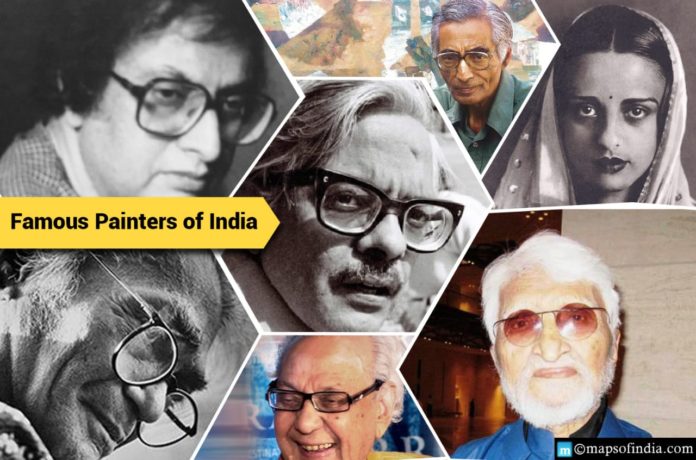Indian art has a long and complicated history that stretches back to ancient times. On the other hand, the painters of old India, who created exquisite works such as the paintings in the caves of Ajanta and Ellora, remain unknown. Raja Ravi Varma was one of the first well-known Indian artists, fusing Western creative skills with a distinctly Indian aesthetic. However, European influences in Indian art emerged due to British control and their educational system. Abanindranath Tagore founded the Bengal School of Art, which was instrumental in shifting the Indian art scene away from western elements and more towards Indian traditional aesthetics.
The Progressive Artists’ Group (PAG) was created in 1947 and combined elements with western techniques from Indian art history. S. H. Raza, M. F. Husain, and Tyeb Mehta were among the painters who went on to earn international fame. Many PAG artists eventually looked to Indian culture to breathe fresh life into their work.
Following are the four most renowned Indian painters and their famous works:
Maqbool Fida Hussain
Maqbool Fida Hussain, often known as M.F Hussain, was a well-known Indian painter for his vibrant, energetic, and dramatic works. He was one of the most famous artists on the international stage.
Hussain was indeed a self-taught artist who has often demonstrated his ability as an art genius via the complexity of his paintings and unmatched technique. “Horses” and “Mother India” are two of his most famous and beautiful images.
Abanindranath Tagore
Bharat Mata, one of Abanindranath Tagore’s (the Bengal School of Art) most famous paintings, portrays a saffron-clad lady dressed as a Sadhvi carrying a book, paddy sheaves, a piece of white cloth, and a garland in her four hands. The artwork, which was extremely important because of its emotional and historical significance, became extremely popular among patriots in those days, especially after Lord Curzon’s proposal to divide Bengal. Therefore, sister Nivedita, a fan of the artwork, planned to transport it from Kashmir to Kanyakumari to instil nationalist sentiment among the country’s citizens.
Jamini Roy
Jamini Roy started as a Post-Impressionist landscape and portrait painter. His painting reflected European influences, which matched his education in a British academic system. Roy, however, entirely shifted his approach from his Western educational background to a new style based on Bengali folklore in the mid-1920s. As a result, traditional Bengali painting impacted his skills and subject matter. Jamini Roy’s artwork was primarily intended to depict the simplicity of ordinary people’s lives.
He also desired to make art more accessible to a larger audience and give Indian art a distinct character. Kalighat painting, an Indian form of art with broad sweeping brushstrokes, affected Jamini Roy. He was particularly interested in the Santhals, a tribal group in Bengal’s rural areas. Jamini Roy was one of India’s most prominent artists at the period, and his work had a significant impact on Indian modern art. As a result, the Government of India bestowed the Padma Bhushan to him in 1955.
Francis Newton Souza
Francis Newton Souza was born in the State of Goa. He was among the first painters from a newly independent India to gain worldwide fame. In 1947, he co-founded the Progressive Artists’ Group (PAG) in Mumbai. His work was multi-faceted and cross-disciplinary, mostly modernist and stressing postwar raw art trends. Landscapes and expressionistic paintings were his best-known artworks.




